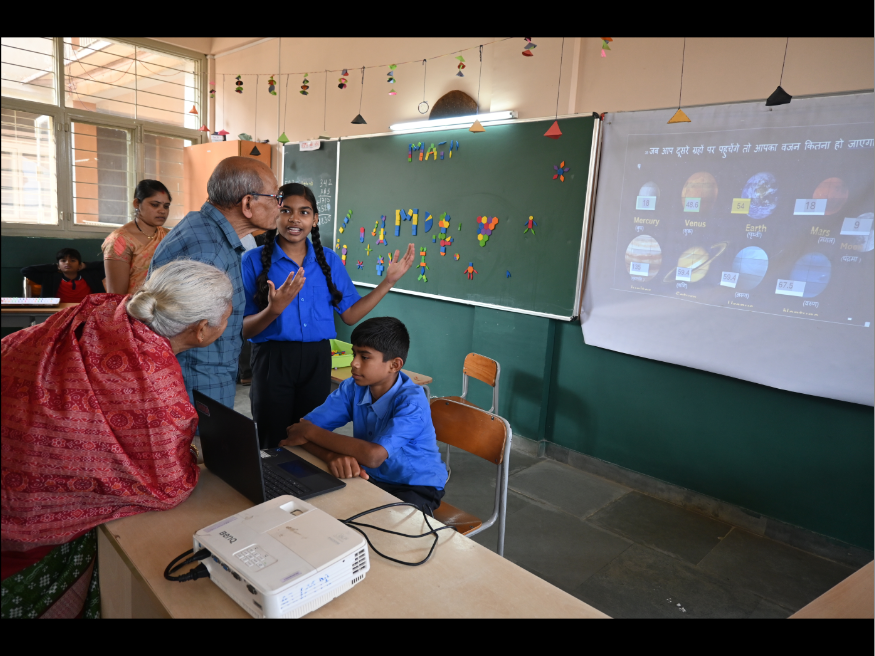Frequently Asked Questions: National Mathematics Day in India
What is the goal of National Mathematics Day?
Observed on December 22 in honor of mathematician Srinivasa Ramanujan, it aims to reframe mathematics as a creative problem-solving discipline – and not just rigid formulas – in order to directly challenge students’ anxiety.
How is it specifically celebrated?
Schools organize hands-on events like Baal Shodh Melafeaturing puzzles, planetary weight calculations, and geometric models that advance learning beyond textbooks.
What is the long term goal?
The goal is to develop the fundamentals of calculus by connecting mathematics to real-world applications in finance and art, thereby honoring India’s mathematical heritage while preparing students for data-driven challenges.
National Mathematics Day in India: celebrating the joy of numbers
contributed by Mokhtarmathematics teacher, Azim Premji school
Every year on December 22, India celebrates National Mathematics Day, commemorating the birth anniversary of legendary mathematician Srinivasa Ramanujan.
More than just a tribute, this day has become an opportunity for schools across the country to arouse curiosity, reduce fear and make mathematics an enjoyable subject for students.
At Azim Premji School in Dhamtari, this spirit was clearly on display during the Baal Shodh Mela, where a specially designed mathematics corner became a center of excitement. Students, often hesitant about the subject, enthusiastically threw themselves into puzzles, games and creative challenges, proving that when math is made fun, it quickly loses its image of difficulty or bore.
The activities carried out during this day showed how mathematics can be experienced beyond textbooks. Tasks such as calculating weight on different planets or exploring reflections through mirrors not only entertained but also deepened understanding. The children enjoyed solving these challenges and their joy in finding solutions strengthened their confidence in their abilities and their pride.
In addition, the school practice of the “Question of the Week”, posing problems of reasoning and models, was highlighted in order to extend the celebration to regular learning. Such puzzles encourage critical thinking and problem solving, showing that math is about creativity, not just formulas.


One of the most notable aspects of the celebration was its ability to demonstrate real-world applications of mathematics. From the symmetry of rangoli designs to their role in finance, technology, medicine, architecture and even art and music, students discovered that mathematics truly is everywhere.
This connection to everyday life not only enhances learning, but also honors India’s rich mathematical heritage, from Vedic mathematics to the contributions of Aryabhata, Bhaskara and Ramanujan. It inspires young minds to study mathematics more seriously while reminding teachers and parents of the importance of developing a strong foundation in numeracy.
The celebration of Mathematics Day does not take place on a single day; it has a long-term influence on classroom teaching. Students who enjoyed the puzzles and activities during the event were later observed showing greater interest in related topics such as measurement and geometry.
These events also promote peer learning and collaboration. When children solve problems together, they not only strengthen their own understanding, but also develop teamwork, self-confidence and communication skills that teachers can continue to develop in mainstream classrooms.


A personal memory
The importance of such celebrations touches me personally. As a class 9 student, I vividly remember the time when our school established a mathematics laboratory. Until then, the very idea of a mathematics “laboratory” seemed strange. But once we started experimenting, our curiosity turned into enthusiasm.
I created a model to demonstrate the formula (a+b)2=a2+b2+2ab) using carved pieces of marble, and I still remember the pride I felt. That same year, our school celebrated National Mathematics Day for the first time with an exhibition of our projects. It was a turning point that made mathematics alive, creative and personal.
To make celebrations like Maths Day have a deeper impact, schools can:
- Organize student exhibitions featuring models, origami, clocks and corner constructions.
- Integrate curriculum-based displays on measurement, data management, and reasoning games.
- Use technology tools like GeoGebra to visualize concepts interactively.
- Introduce interdisciplinary connections and how mathematics supports science, architecture, and art.
- Invite guests and parents to interact with students, encouraging dialogue and recognition of their efforts.
A society that embraces mathematics is better prepared to meet modern challenges such as data analysis, financial literacy and scientific innovation. Celebrating National Mathematics Day, therefore, is not only meant to spark joy among children but also prepare India for the future.
By making mathematics engaging, accessible and connected to real life, such celebrations remind us that mathematics is not just about numbers, but also about patterns, problem solving and creativity. When children discover this joy, their perception of the subject changes and the enthusiasm lasts well beyond a single day.
Mokhtar
Mathematics teacher
Azim Rewards School
Raigarh (Chhattisgarh)
Attachments –



